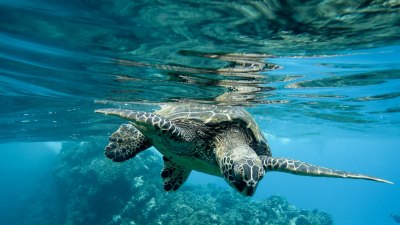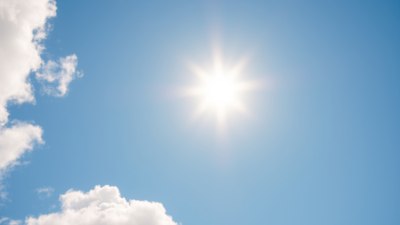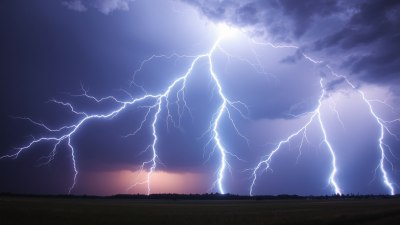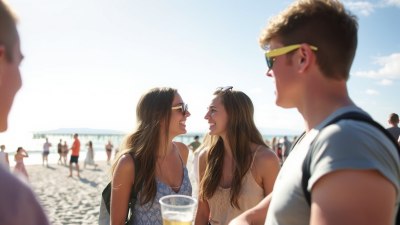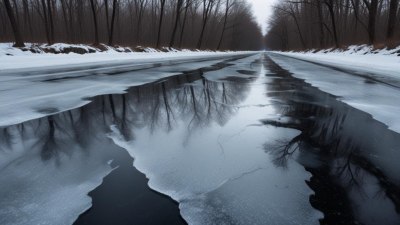Why Someone Always Gets Sunburned at a Lake Trip, No Matter What
Discover why some people always end up sunburned at the lake, regardless of precautions taken.

This image was created with the assistance of Freepik
Planning a lake trip brings forth images of sun-soaked fun, relaxation, and quality time with family or friends. However, there's often that one person in the group who seems doomed to get sunburned, despite applying sunscreen diligently and taking precautions. Understanding why this phenomenon occurs requires diving deeper into skin biology, environmental factors, and behavior-tracking during sunny outings.
Understanding Skin Types
Every individual's skin responds differently to sunlight, influenced by its unique composition. Skin types are often categorized using the Fitzpatrick scale, which ranges from Type I (very fair) to Type VI (dark brown). Those with lighter skin phenotypes are at a heightened risk of sunburns since they have less melanin—a natural pigment that provides some protection against UV radiation. Although everyone can get sunburned, those who start with fair skin are more susceptible after even minimal exposure. Besides genetic predisposition, factors such as the presence of skin conditions like eczema or psoriasis can further increase vulnerability to sun damage.
The Role of UV Radiation
Ultraviolet (UV) radiation from the sun consists primarily of UVA and UVB rays. UVA rays penetrate deeply into the skin and are responsible for premature aging, while UVB rays cause direct damage to the skin's surface and are the primary culprits of sunburn. It's essential to remember that UV rays can still reach us even on cloudy days or when reflections off water or sand occur, increasing the likelihood of sunburn for those who underestimate exposure levels.
The Water Factor
A trip to a lake usually means being surrounded by water, which creates a specific set of challenges when it comes to sun protection. Sunlight reflects off the water's surface, directing UV rays back toward the skin. Studies suggest that water can intensify UV exposure by up to 50%. This means that even if one is shaded by an umbrella or sitting on a dock, rays can still find their way to unprotected skin. Additionally, water can wash away sunscreen, reducing its effectiveness. Many people underestimate how often they need to reapply sunscreen during water activities, especially if they’re swimming or sweating.
Behavioral Factors
Behavior plays a crucial role in sunburn susceptibility at lake trips. Some individuals are more prone to adherence to the recommended sun safety guidelines. They might apply sunscreen lightly, only covering certain areas instead of the entire body or failing to reapply after swimming or sweating. Furthermore, many people underestimate the importance of wearing protective clothing, hats, and sunglasses. Even sitting under shade, such as gazebos or umbrellas, doesn’t offer complete protection since UV rays can scatter and still reach the skin. The tendency to ignore these critical measures often leads to that familiar but avoidable sunburn.
Miscalculating Time Spent in the Sun
Another factor contributing to persistent sunburns during lake trips is the inability to gauge time effectively. While sun exposure can usually be manageable during brief outings, long stretches spent outdoors can lead to unexpected sunburns. Often, people lose track of time while enjoying themselves and may find themselves exposed to the sun for longer than anticipated, mistakenly believing their initial sunscreen application would be sufficient for the entire day. It's vital to take breaks, seek shade, and constantly monitor the time spent outdoors, especially during peak UV hours between 10 AM and 4 PM.
Understanding Sunscreen Effectiveness
The effectiveness of sunscreen is often overestimated. A common mistake is to use a sunscreen of SPF 15 or lower during outdoor activities, mistaking it for adequate protection. Higher SPF values provide a sense of security but should not result in complacency. It’s essential to choose a broad-spectrum sunscreen that protects against both UVA and UVB rays and offers a minimum SPF of 30 for prolonged outdoor activities, including lake trips. Moreover, many beach and lake-goers do not apply enough sunscreen to achieve the SPF level stated on the label—usually, the suggested quantity is 1 ounce (about a shot glass worth) for full-body coverage.
Physical Conditioning and Sunburn Sensitivity
There is a noticeable difference in sunburn sensitivity based on individual health and physical conditioning. Some medical conditions or medications can increase sun sensitivity. For instance, certain antibiotics and anti-inflammatory drugs may enhance one's susceptibility to sunburn, alongside pre-existing medical conditions that affect skin resilience. Consulting with a healthcare provider regarding potential risks before extended sun exposure can help mitigate the risk of severe sunburns.
Mental and Emotional Factors
Stress and anxiety can influence a person’s overall awareness and focus. On a lake trip, an excited mindset may lead to inattentiveness regarding sun protection. That's why creating a comprehensive plan can help individuals remain conscious of sun safety amidst all the fun. Setting reminders for sunscreen application, organizing a rotation for shade breaks, and consistently checking in with each other can help enhance adherence to protective measures.
Choosing the Right Gear
The right gear can significantly impact sun exposure levels. Lightweight, loose-fitting, and tightly woven clothing can provide a physical barrier against rays. Many brands now offer clothing with built-in UV protection rated by an Ultraviolet Protection Factor (UPF). Investing in wide-brimmed hats and polarized sunglasses is also crucial. These accessories can shield both skin and eyes from harmful UV rays and minimize the discomfort that often accompanies a day by the lake.
Post-Trip Care and Prevention
After returning from a lake trip, addressing sunburn should be a priority. Over-the-counter treatments like aloe vera and hydrocortisone creams can soothe irritated skin. Staying hydrated is crucial for recovery, as sunburn can lead to dehydration. Additionally, understanding how to prevent future sunburns is key. Experimenting with different sunscreens, finding effective timing for reapplications, and cultivating mindful sun-safety habits can help individuals break the cycle of recurrent sunburns on future trips.
In conclusion, although the allure of lakeside relaxation is undeniable, understanding the myriad factors that contribute to persistent sunburn is imperative. By recognizing individual skin types, the role of UV radiation, the significance of behavioral choices, physical well-being, and proper protective gear, individuals can take proactive measures to enjoy their lake outings without suffering the unwelcome consequences of sunburn. With thoughtful planning and mindfulness, no one needs to leave the lake trip experience with painful, peeling skin.


